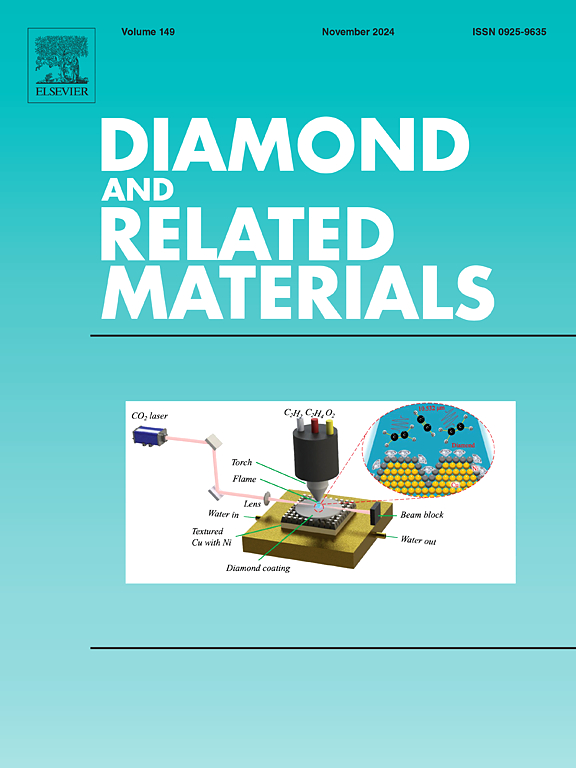Glucose derived carbon-coated titanium dioxide (GDCC-TiO2) as an advanced electrode material for supercapacitor applications
IF 4.3
3区 材料科学
Q2 MATERIALS SCIENCE, COATINGS & FILMS
引用次数: 0
Abstract
This study examines the advancement and performance of glucose derived carbon- coated titanium dioxide (GDCC-TiO₂) as an advanced electrode material for supercapacitor applications. GDCC-TiO2 has been fabricated utilizing titanium dioxide and glucose. During the thermal treatment in an inert atmosphere, glucose molecules coated on the surface of titanium dioxide particles are transforming into carbon. Structural analyses ((X-ray diffraction (XRD), Raman spectroscopy, and transmission electron microscopy (TEM)) verify the presence of carbon coating on TiO2 particles. The in-situ carbon coating provides a conductive network around the TiO₂, significantly improving its intrinsic low electrical conductivity while maintaining its high pseudocapacitive properties. The carbon layer enhances ion diffusion, prevents particle agglomeration, and offers structural stability, leading to improved cycling performance and charge-discharge rates. Electrochemical testing, including cyclic voltammetry (CV), galvanostatic charge-discharge (GCD), and electrochemical impedance spectroscopy (EIS), reveals that the GDCC-TiO₂ demonstrates the properties of the electrode material utilized in supercapacitor. The specific capacitance of GDCC-TiO₂ reaches a significant value 270.7 F/g at lower scan rate 25 mV/s due to enhanced ion penetration into the pores, while good rate capability is measured at higher scan rates. The GDCC-TiO₂ electrode exhibits a high-power density of 1575 Wkg−1 at energy density of 8.7 Whkg−1.

葡萄糖衍生碳包覆二氧化钛(gdc - tio2)作为超级电容器应用的高级电极材料
本研究探讨了葡萄糖衍生碳包覆二氧化钛(gdc - tio 2)作为超级电容器应用的先进电极材料的进展和性能。利用二氧化钛和葡萄糖制备了GDCC-TiO2。在惰性气氛中的热处理过程中,包裹在二氧化钛颗粒表面的葡萄糖分子转变为碳。结构分析(x射线衍射(XRD)、拉曼光谱(Raman)和透射电子显微镜(TEM))证实了TiO2颗粒上存在碳涂层。原位碳涂层在TiO 2周围形成导电网络,显著改善了其固有的低导电性,同时保持了其高赝电容性。碳层增强离子扩散,防止颗粒团聚,并提供结构稳定性,从而提高循环性能和充放电率。循环伏安法(CV)、恒流充放电法(GCD)和电化学阻抗谱(EIS)等电化学测试表明,gdc - tio 2具有超级电容器电极材料的性能。在较低扫描速率(25 mV/s)下,gdc - tio 2的比电容达到270.7 F/g,这是由于离子对孔隙的渗透增强,而在较高扫描速率下,gdc - tio 2具有良好的倍率性能。在8.7 Whkg−1的能量密度下,gdc - tio 2电极的功率密度高达1575 Wkg−1。
本文章由计算机程序翻译,如有差异,请以英文原文为准。
求助全文
约1分钟内获得全文
求助全文
来源期刊

Diamond and Related Materials
工程技术-材料科学:综合
CiteScore
6.00
自引率
14.60%
发文量
702
审稿时长
2.1 months
期刊介绍:
DRM is a leading international journal that publishes new fundamental and applied research on all forms of diamond, the integration of diamond with other advanced materials and development of technologies exploiting diamond. The synthesis, characterization and processing of single crystal diamond, polycrystalline films, nanodiamond powders and heterostructures with other advanced materials are encouraged topics for technical and review articles. In addition to diamond, the journal publishes manuscripts on the synthesis, characterization and application of other related materials including diamond-like carbons, carbon nanotubes, graphene, and boron and carbon nitrides. Articles are sought on the chemical functionalization of diamond and related materials as well as their use in electrochemistry, energy storage and conversion, chemical and biological sensing, imaging, thermal management, photonic and quantum applications, electron emission and electronic devices.
The International Conference on Diamond and Carbon Materials has evolved into the largest and most well attended forum in the field of diamond, providing a forum to showcase the latest results in the science and technology of diamond and other carbon materials such as carbon nanotubes, graphene, and diamond-like carbon. Run annually in association with Diamond and Related Materials the conference provides junior and established researchers the opportunity to exchange the latest results ranging from fundamental physical and chemical concepts to applied research focusing on the next generation carbon-based devices.
 求助内容:
求助内容: 应助结果提醒方式:
应助结果提醒方式:


